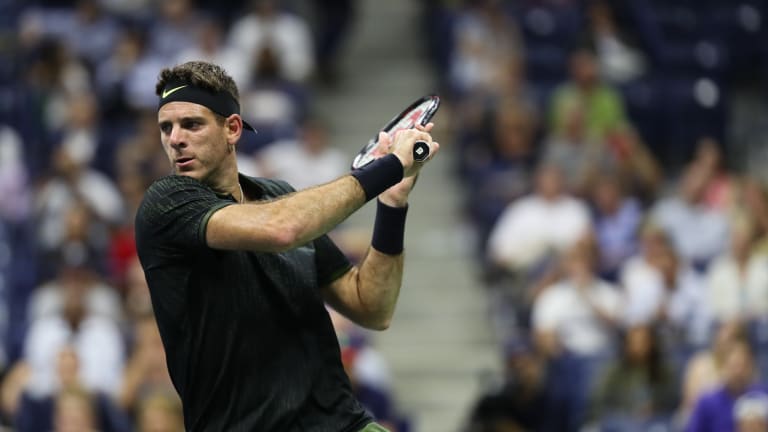NEW YORK—If you’re unfortunate enough to lose one of your senses, the others will try to compensate by becoming more acute. Can the same thing happen to a tennis player who loses one of his shots?
That seems to be the case with Juan Martin del Potro this year. When he returned from surgery on his left wrist this March, after spending the better part of two seasons away, it was obvious that his two-handed backhand was either no longer what it once was, or a long-term work in progress. No longer able to drive through the ball the way he once had, he was left to slice or block it back, run around it whenever possible or hope his opponents couldn’t find it.
On the plus side, it was also apparent that Delpo was better at hiding his backhand now, and that his serve and forehand could pick up the slack. His low, slow slice actually gave him more time to set up for a forehand and maneuver his opponents out of position. Now his two big weapons have to be more powerful and accurate than ever; quite often, especially at the Olympics in Rio last month, they have been.
